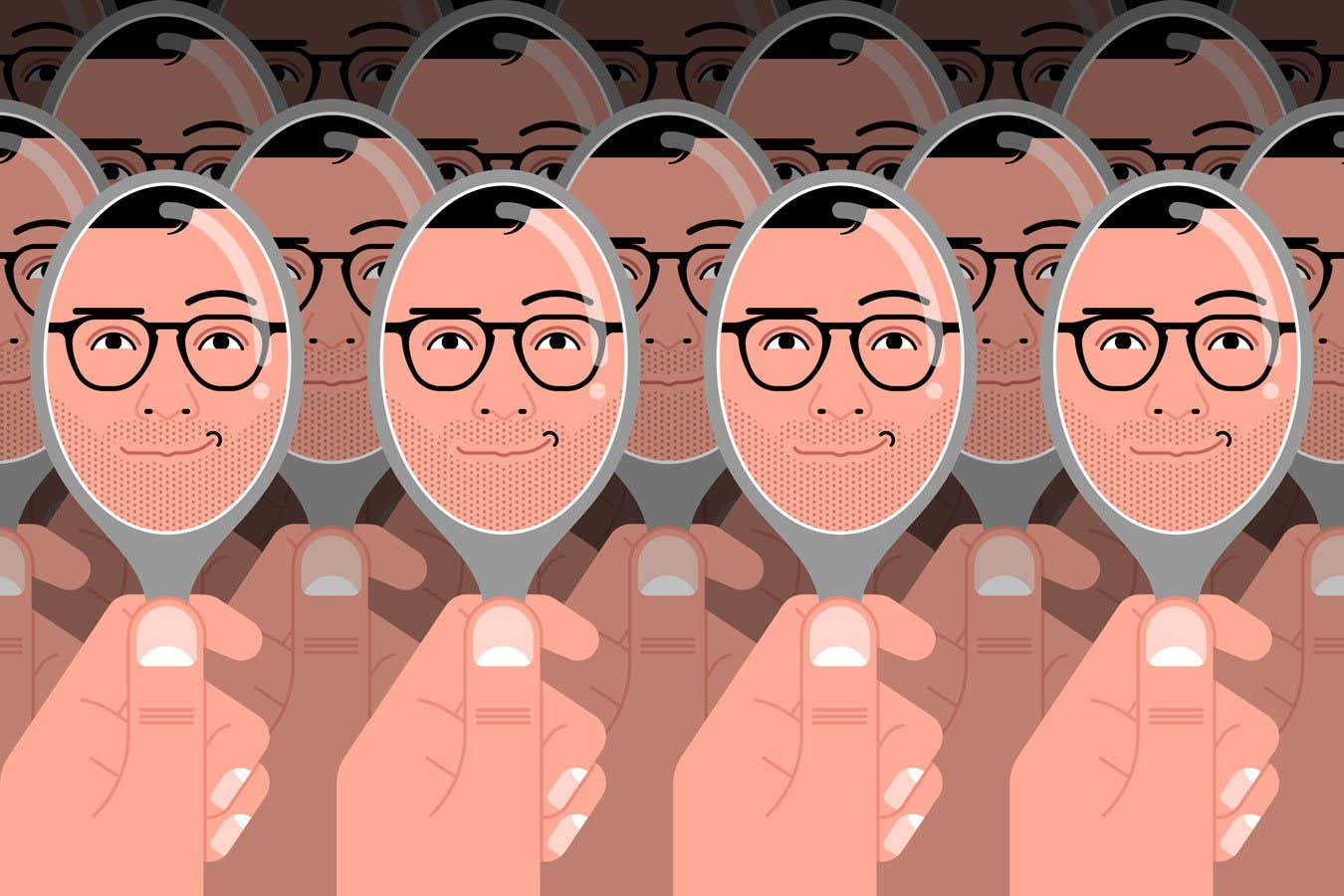
Looking back, the signs were obvious: an extreme need for control, a pathological tendency to exaggerate and an almost comical sense of superiority.
My family member claimed to know more than everyone about everything, no matter the topic. He claimed to have the makings of a world-class teacher, doctor, writer or athlete, while also boasting about his modesty. Any disagreement would result in shouty rants or violent outbursts.
Family friends could barely believe it when I told them. “When he meets us, he acts like charm personified,” is how one put it. These were all classic traits of narcissistic personality disorder (NPD), a condition characterised by a disregard for the feelings of others combined with an extreme sense of self-importance, often manifesting in interpersonal abuse. At the time, however, I had no way to make sense of this family member’s behaviour – this was before the conversation around narcissism had reached its current level of social saturation.
“We really didn’t have the language in the mainstream – it wasn’t on the radar like it is now,” says Sarah Davies, a clinical psychologist and author of Raised by Narcissists and How to Leave a Narcissist… For Good. “I remember Googling the search term ‘narcissistic abuse’ and coming up with just seven results.”
The profusion of interest in NPD has raised awareness and given people who have experienced narcissistic abuse a vocabulary to talk about it. But it has also been accompanied by the spread of misinformation, which may prevent those with the condition and the people they hurt from getting the support they need.
So, what is NPD? And can it be treated?
In love with oneself
Humanity’s interest in excessive self-admiration has been evident since the Roman poet Ovid popularised the mythological Narcissus, who was cursed by the gods to fall in love with his own reflection. In the late 19th century, the term “narcissistic” was initially applied to cases of excessive masturbation. By the mid-1920s, the term came to describe a more general personality disorder, but it would take another 50 years for the Diagnostic and Statistical Manual of Mental Disorders (DSM) to include NPD.
“
Narcissism is considered one side of the “dark triad”, a trio of personality traits that can drive callous and cruel behaviour
“
NPD, according to its DSM definition, is characterised by grandiosity, a desperate need for admiration and a lack of empathy for others. People with the condition frequently overestimate their abilities and inflate their accomplishments. The bloated ego comes with a sense of entitlement, a need for praise and constant attention, and a feeling of alienation – in the narcissist’s view, it would be impossible for other mortals to recognise the problems that come with being so extraordinary. Narcissists are also often preoccupied with envy, either being very envious of other people or convinced that other people are envious of them. Finally – and perhaps most damagingly – many of them manipulate and exploit others, with little regard for the hurt they cause. The consequences can be emotional and physical abuse.
“Not every narcissist is abusive,” says Davies, while also noting that recognising narcissistic abuse can be challenging – narcissists may be very skilled in manipulation and gaslighting. Narcissism is also considered one side of the “dark triad”, a trio of personality traits that can drive callous and cruel behaviour. Psychopathy, characterised by impulsivity and a lack of empathy, and Machiavellianism, marked by manipulative and sometimes amoral attitudes, make up the other sides.
Psychologists often use a self-reported questionnaire called the Narcissistic Personality Inventory (NPI) to measure narcissistic traits in the general population. A formal diagnosis of NPD typically involves an in-depth conversation with a health practitioner. However, someone with a problematic sense of superiority may reject the very idea that they need treatment, making them unlikely to seek help for a problem they don’t believe they have. “A true narcissist will believe that any issues are somebody else’s fault,” says Davies.

The term “narcissism” is incorrectly used to describe all sorts of behaviour
MARCO BERTORELLO/AFP via Getty Images
This can make it hard to estimate the total number of people living with NPD, and studies of the general population have provided mixed results. The National Epidemiologic Survey on Alcohol and Related Conditions offers the largest sample. Between 2001 and 2002, researchers conducted face-to-face interviews with 34,653 US residents. They identified 2148 people with NPD, giving an estimated prevalence of 6.2 per cent. Other, smaller surveys have tended to find lower rates, meanwhile, with an average prevalence of 1 per cent across the various studies.
The precise figure may be a moot point, however, since most psychologists would agree that NPD represents the extreme end of a behavioural spectrum that exists in everyone. “To some extent and in certain contexts, these traits can even be adaptive,” says Emmi Koskinen at the University of Helsinki in Finland. In moderation, a belief in oneself can motivate us to achieve great things, and there is nothing wrong with being assertive about our needs and wants. “However, when [these traits] become more pronounced, they tend to lead to interpersonal difficulties and negative consequences for both the individual and those around them,” says Koskinen.
Narcissistic processing
Identifying narcissism can help psychologists understand how narcissists process the world around them – and possibly help them change.
Though the definition of NPD in the DSM cites a lack of empathy as intrinsic to the condition, researchers point out that the relationship between empathy and narcissism is complex. For example, one 2023 analysis of several studies found that while affective empathy – feeling what others are feeling – was impaired in people with NPD, cognitive empathy, or knowing what others are feeling, was not. The implication is that people with narcissism might be aware of others’ feelings – they just might use that information for their own self-serving ends, or they don’t care.
This lack of concern for other people’s emotions is in stark contrast to their preoccupation with their own feelings. Narcissists are often easily offended. In 2015, for instance, Christopher Cascio at the University of Wisconsin and his colleagues asked people to play a computer game in which three players pass a ball to each other. Unbeknownst to the participants, the other two players were controlled by the computer – and they slowly began to ignore the human. In most people, the resulting feelings of social exclusion led to heightened activity in areas of the brain known to process distress, including the anterior insula, and the extent of that activity seemed to correlate with their scores on the NPI. The more narcissistic they were, the more distress they felt.
Such findings have led researchers to speculate that narcissism arises from a heightened concern about social evaluation, with the self-aggrandising behaviour serving as a defence against a bruised ego.
Along these lines, Koskinen and her colleagues recently asked participants to take the NPI before splitting them into pairs to talk about life’s highs and lows, such as times they felt admired or ashamed. Meanwhile, electrodes on their fingers measured how much they were sweating, an indication of how much stress they felt. The higher a person scored on the NPI self-evaluation, the more they perspired during the more intimate parts of the conversation. They cared so much about impressing the other person that it was seriously stressing them out.
This heightened attention to others’ reactions was evident in a series of studies, also published earlier this year, that examined narcissists’ perceptions of ostracism. In one experiment, Christiane Büttner at the University of Basel, Switzerland, asked online volunteers to consider a series of fictitious scenarios exploring perceptions of social exclusion. People scoring higher on a questionnaire measuring narcissism were significantly more likely to read situations as intentionally exclusionary, compared with participants with lower levels of the trait.
“
“Any perceived threat to their status or recognition is deeply aversive”
“
“Any perceived threat to their status or recognition is deeply aversive,” says Büttner. This bias was evident in people’s reflections on their lives when participants were asked to keep track of their social interactions each day for two weeks. The more-narcissistic participants reported experiencing greater social ostracism in their daily exchanges – when asked to recall how many times they had been excluded over the past 14 days, they overestimated the number of incidents they had recorded. This suggests that their memory is biased towards feelings of exclusion.
You might think that being excluded would decrease someone’s delusions of grandeur, yet a further study suggested that the opposite is true. Analysing data from a 14-year study, Büttner found that people’s sense of being ostracised could predict a rise in their narcissistic traits over the following 12 months. She speculates that feeling socially excluded “triggers self-enhancing defences” to protect them from the pain.
The problem is that, thanks to their antisocial behaviours, people who already display narcissistic traits to begin with are also more likely to be ostracised. The result may be a self-perpetuating cycle. “If exclusion is repeated or chronic, individuals might begin to compensate by inflating their self-image, becoming more self-focused, or engaging in more attention-seeking or antagonistic behaviours,” says Büttner.
Shrinking the narcissistic gender gap
While the DSM doesn’t differentiate between different flavours of narcissism, many psychologists argue that it can be separated into at least two subtypes, depending on the way it manifests. Grandiose, or overt, narcissists seem more outwardly confident and are more likely to boast and brag. Vulnerable, or covert, narcissists appear more introverted. They secretly see themselves as special, but they are less likely to show off and may instead seek reassurance from others.
“Vulnerable narcissists are more softly spoken, more shy, more brittle, appear to have lower self-esteem, so that you would never initially consider this person as being very narcissistic,” says Ava Green, a forensic psychologist at City St George’s, University of London. “But once you get to know them, you see beneath that facade of vulnerability there are these underlying traits: expectations of entitlement to special treatment, [self-enhancing] fantasies about themselves, and the exploitation of other people.”
Similarly, a grandiose narcissist may seem more outwardly confident, says Green, “but they are constantly yearning for other people’s attention to boost or regulate their own self-esteem, so there’s always an underlying vulnerability”. At their core, she says, they are the same – vulnerable narcissists may have escaped our attention in the past, she says, but “we shouldn’t underestimate the amount of harm they can do other people”.
“The type of abuse doesn’t differ between the grandiose and vulnerable subtypes, it just depends on individual circumstances,” says Green. The DSM assessment places far more emphasis on the type of behaviour seen with grandiose narcissism than with vulnerable narcissism. This might be a bigger blind spot than it first seems: grandiose expressions of the behaviour are more commonly seen in men, whereas women might be more likely to exhibit vulnerable features. This may explain why up to 75 per cent of people diagnosed with NPD are men. Green and her colleagues found that this apparent gender gap shrinks when you consider the subtypes – women score more highly than men on vulnerable narcissism.
“It isn’t the fact that narcissism is a gender-specific trait,” says Green. “Women exhibit these features too, but in a way that’s not captured by the grandiose assessments.” She points out that the different subtypes often align with cultural gender norms for men and women. It may seem more socially acceptable for a man to ebulliently boast about his skills and abilities, for instance, whereas a woman is expected to act more passively in public.
Social media narcissists in the selfie era
Much of the recent conversation around narcissism has taken place online – fitting, because narcissism is now often most visible on social media platforms. Large studies have shown that narcissism scores can predict how often people share material with others, although it is still unclear whether this is limited to grandiose types.
Some experts have even claimed that social media may be driving up the incidence of narcissism, though the evidence supporting this is scant. “I’m not saying it’s impossible, but I don’t think we have a lot of good data yet,” says René Mõttus, who researches personality at the University of Edinburgh, UK.
Social media may not be changing the prevalence of NPD, but it has certainly helped to raise awareness of the condition and the damage that it can wreak on our relationships. Therapist Ramani Durvasula, for instance, hosts the popular Navigating Narcissism podcast; she has more than three-quarters of a million followers on Instagram. Lee Hammock, meanwhile, is a recovering narcissist with more than half a million Instagram followers who has undergone years of therapy to overcome his solipsistic tendencies. At the time of writing, more than 1 million Instagram posts have been tagged with #narcissism.
The quality of the online discourse can be mixed. “Increased awareness and discussion is really helpful, but the information is not always clinically reliable,” says Davies. The term narcissism is now being used to describe any emotionally immature behaviour, she says, which may lead people to misdiagnose the underlying problems they are facing. “We’ve got to be a bit more careful about these sweeping generalisations.”

There is much speculation that social media is fuelling narcissism – but little evidence to support this idea
Steve Gale/Unsplash
Davies is particularly worried about the number of unqualified influencers dishing out advice. “All sorts of people are sharing their experiences and, worryingly, offering services to help others heal from narcissistic abuse, even though they have not been trained to do so,” she says. “It’s quite ironic, because that is actually quite a narcissistic thing to do.”
If you are or have been the victim of narcissistic abuse, Davies recommends looking for authoritative sources, such as the UK charity See Through NPD, and seeking support from trained professionals. “Therapy can really help you to make sense of what you’ve been through,” she says. (If you are in the US, the National Domestic Violence Hotline can help.)
Though narcissists have a reputation for being very difficult to treat or change, some case studies suggest that they can respond to talking therapy. In 2024, for instance, a team led by Igor Weinberg at Harvard Medical School published a paper on eight patients who underwent treatments such as psychodynamic therapy, which helps people to explore the effects of early childhood experiences, or dialectical behaviour therapy, which helps people to manage difficult emotions. After up to five years, the patients no longer met the clinical diagnosis of NPD, and many reported positive life changes, such as gaining employment or getting married.
Some leopards, it seems, can change their spots – but it remains to be seen how common this is. The individual needs to acknowledge their faults, after all, which won’t come easily to someone who doesn’t believe they have any. As I found after decades of interactions with my family member, there is often no reasoning with a narcissist. In their eyes, they can do no wrong, and we are simply better off without them in our lives.
David Robson is the author of The Laws of Connection: 13 social strategies that will transform your life (Canongate).
Topics:
Source link : https://www.newscientist.com/article/2496324-the-truth-about-narcissists-how-to-handle-them-and-can-they-change/?utm_campaign=RSS%7CNSNS&utm_source=NSNS&utm_medium=RSS&utm_content=home
Author :
Publish date : 2025-09-23 16:00:00
Copyright for syndicated content belongs to the linked Source.














